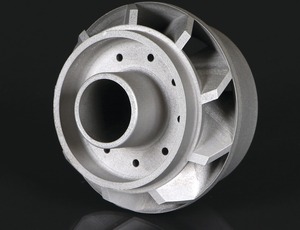
The U.S. Air Force Research Laboratory is awarding contracts to a partnership of aerospace and defense contractors and a 3D printing company to refine innovative 3D printing methods for use in manufacturing aerospace parts.
The lab on Feb. 3 awarded $1 million in contracts to underwrite two projects aimed at enhancing intricate control during 3D printing. The awards were made through America Makes, an additive manufacturing innovation institute in Youngstown, Ohio.
"[One] project will allow users to monitor prints at the layer level of a 3D print, so they can identify needed design improvements rapidly and produce accurate, repeatable and, above all, flight-worthy parts," says Neal Orringer, vice president of alliances and partnerships, 3D Systems (3DS), Rock Hill, S.C.
The method is selective laser sintering, or SLS: a plastic powder-bed fusion 3D printing technique that, in a layer-by-layer fashion, uses a laser to melt polymeric powders into a solid 3D shape, says Jennifer Fielding, government program manager at America Makes.
Fielding says 3DS will work on the SLS project in partnership with the University of Delaware's Center for Composite Manufacturing, the Sandia National Laboratory and Lockheed Martin Corp.
3DS claims it invented both SLS printing, which it commercialized in 1992, as well as the first commercialized 3D printing technology, called stereolithography.
Stereolithography is a process in which a laser traces portions of cross-sectional layers into a vat of UV-curable photopolymer. Using the technique, 3DS successfully printed a small cup in 1983.
The second funded partnership deals with 3DS's so-called direct metal 3D printing, a technique that, layer by layer, uses lasers to melt fine metallic powder into metal parts, says Orringer.
In partnership with Honeywell International and Northrop Grumman Corp., the firm will collaborate with the Applied Research Laboratory of Pennsylvania State University. The goal is to help users control almost every aspect of direct metal manufacturing at the layer level, says Orringer.



Post a comment to this article
Report Abusive Comment